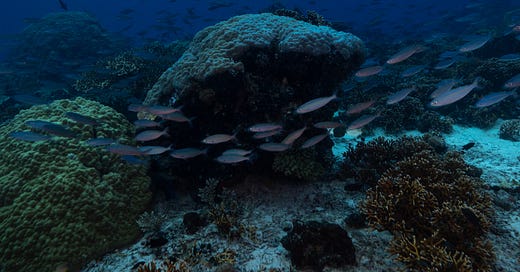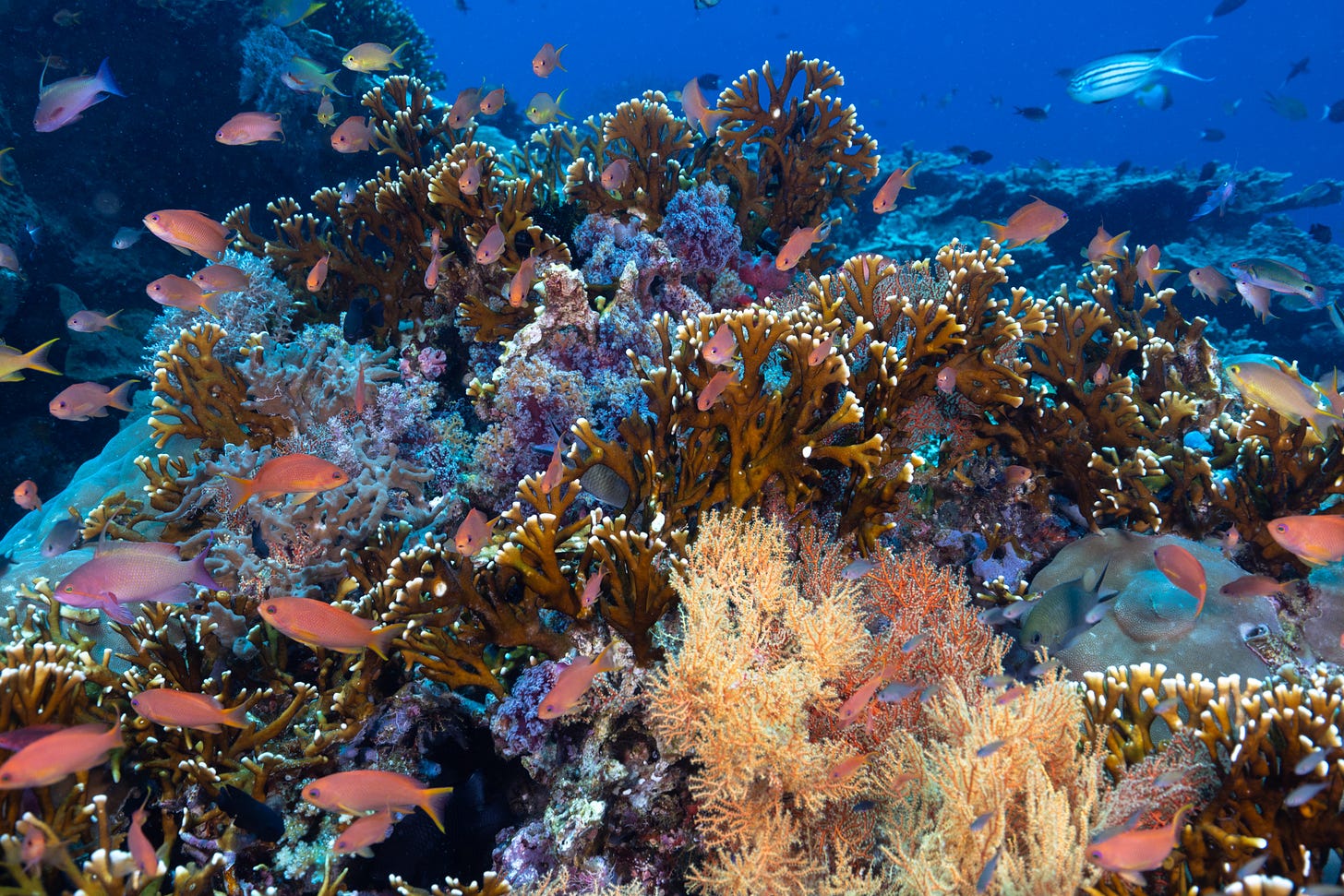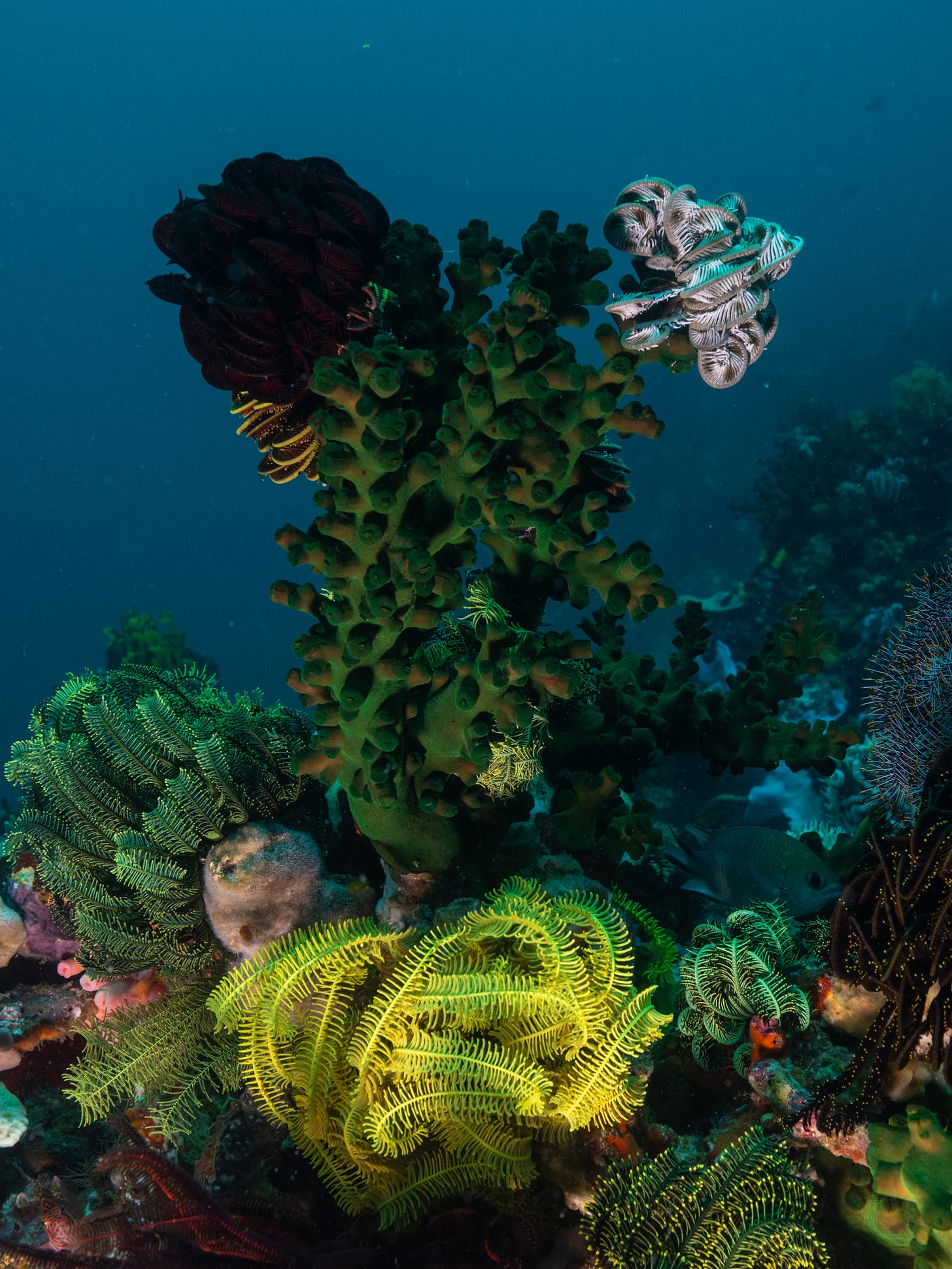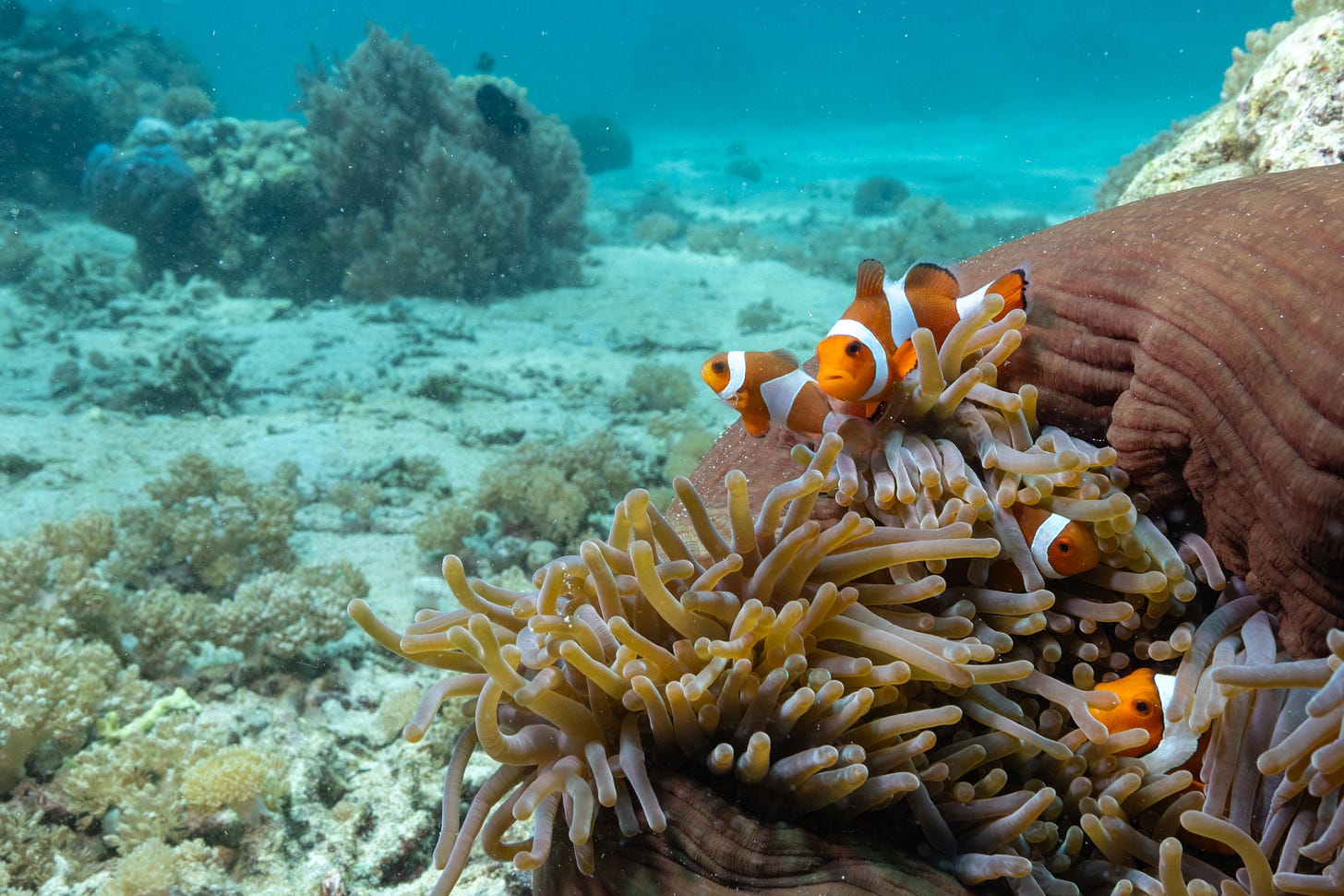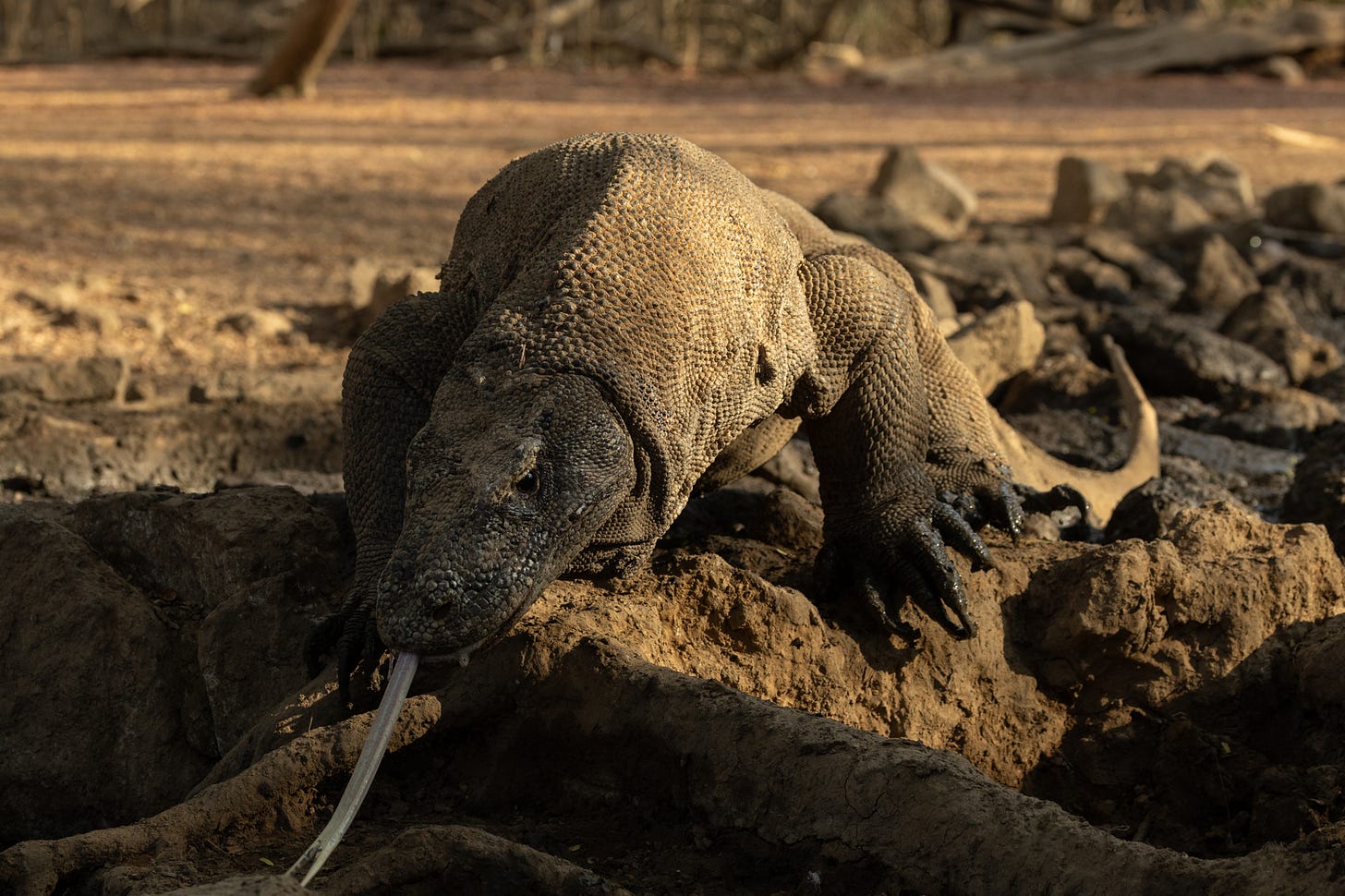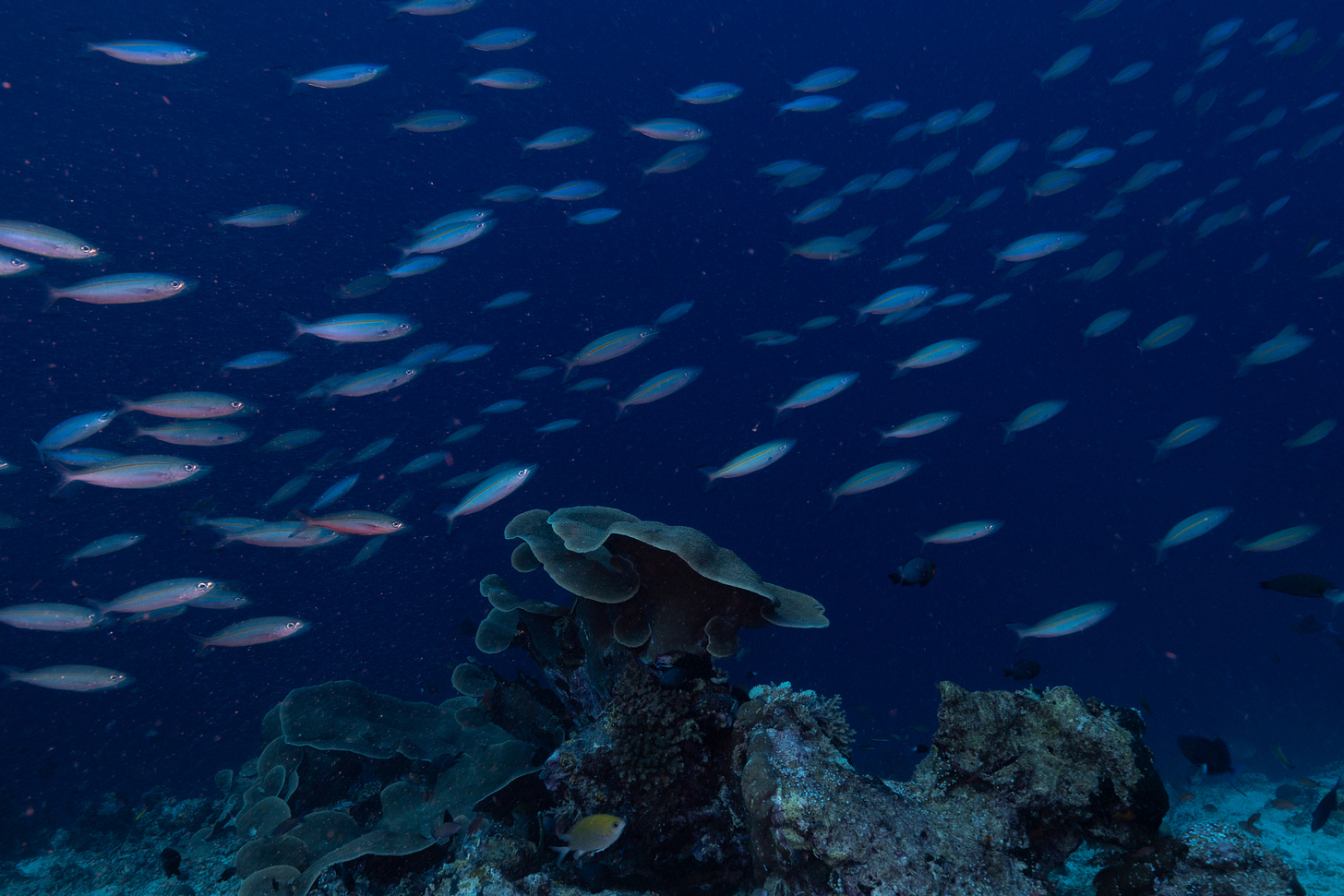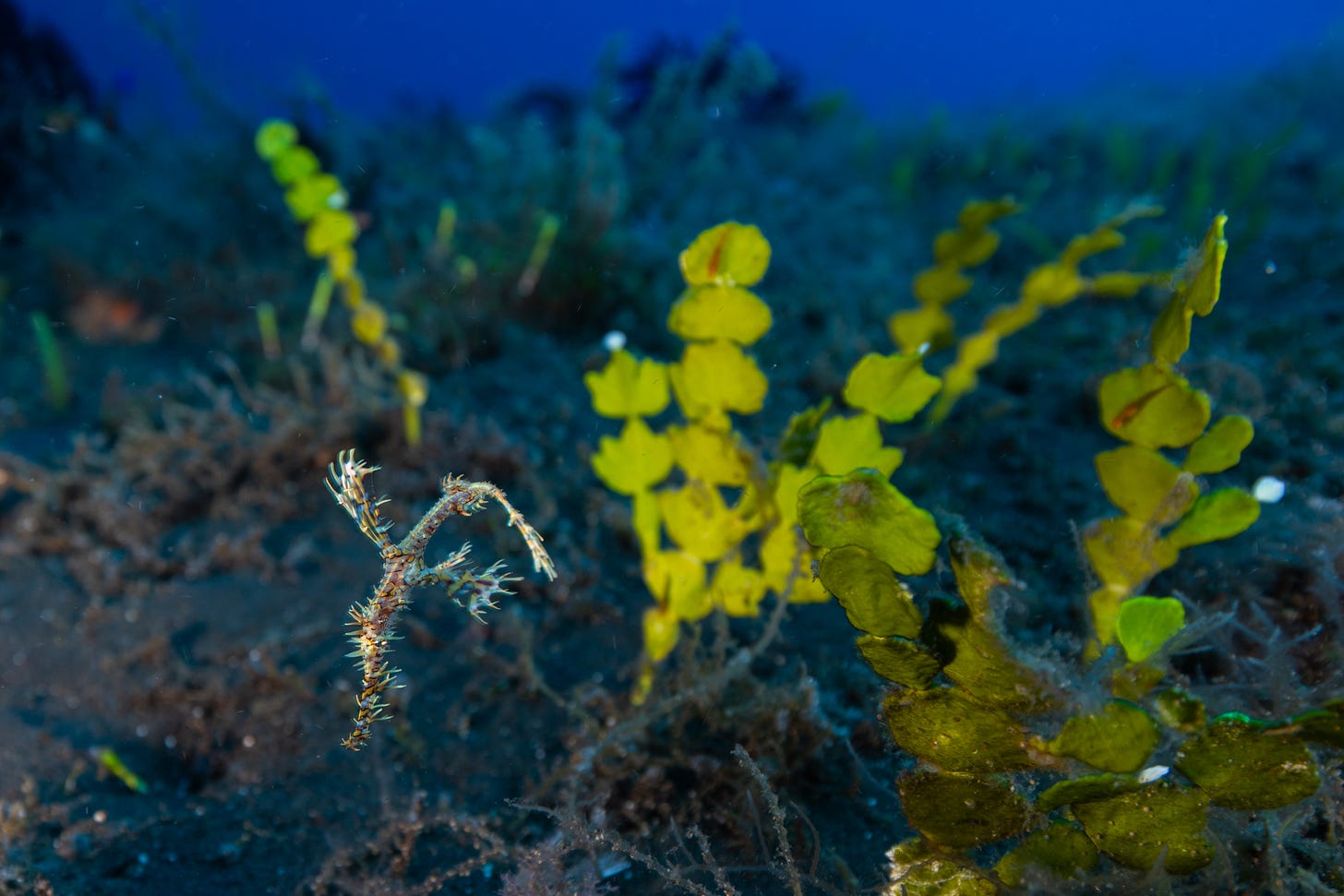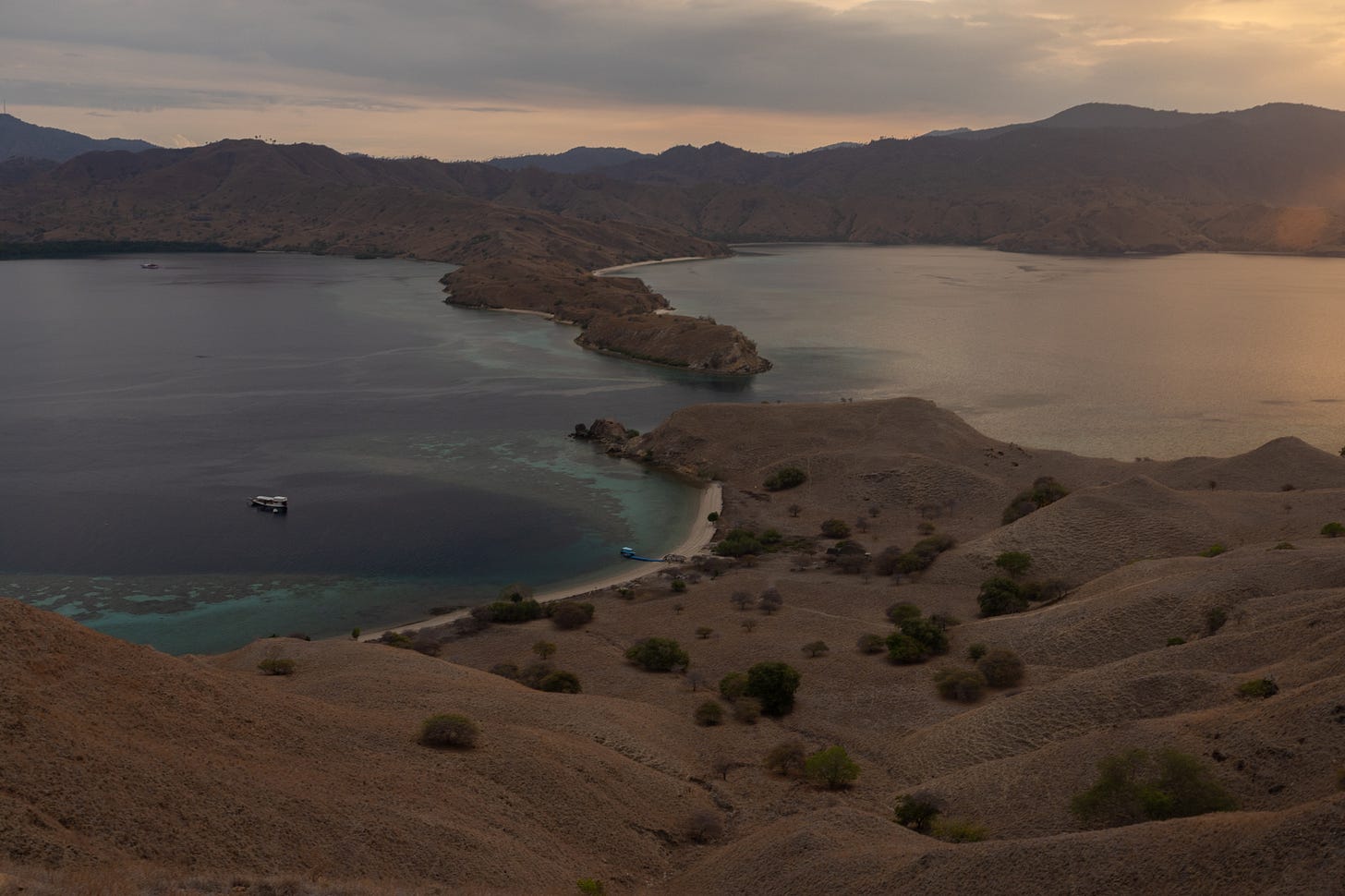In October, we set sail for Komodo under a field of unfamiliar stars. Everyone had assumed we were on our honeymoon, when in truth, I had convinced my new husband to spend his only week of vacation on a dive trip with my extended family. I had also convinced myself that a vacation was an opportune time to learn a new skill, and had rented a gigantic underwater camera housing that I had no idea how to use. Now, departing from Bali, I lay on the bow of the boat between my husband and my mother, looking up.
All around us, the 17,508 islands of the Indonesian Archipelago spread across a fertile sea. It had been a frenetic, spread-thin year, between fieldwork, the wedding, and now the looming US presidential election, which kept us up at night with uncertainty about our future. Under the sea, as this new, larger family, I had hoped to rekindle a shared sense of wonder in the natural world, to expand our awareness of an ecosystem much different from our own.
There was only one problem: I had been having ear trouble for months, and I didn’t know if I’d be able to descend beneath the ocean’s surface at all without the risk of damaging my hearing forever. I had kept the fossilized inner ear of a whale on my desk as a sort of talisman, a little prayer that my own ears, under the ocean’s pressure, would hold out.
*
We were headed towards Komodo National Park, at the heart of the Coral Triangle: a marine region in the Indo-Pacific whose biodiversity is matched only by the Amazon Rainforest. Once, far back in time, its waters were separated into shallow seas and marine lakes. There, its animals evolved into thousands of unique species that now, apparently, flourished together where the Pacific and the Indian Ocean currents meet.
In warm winds near Mojo Island, I rode in a dinghy to the first dive site with my parents, my husband, our divemaster, and my camera. Fully assembled with two giant strobes, it weighed 15 pounds and was as large as my torso. I was nervous about flooding the camera, about destroying my ears, and also about using flash, which I hadn’t really done in a decade. But on the count of three, we all rolled backward over the edge of the pontoons. I seized ahold of the camera, thanked my lucky stars I wasn’t on assignment, and sank into the ocean.
I was born terrified of the water. As a child, the ocean was unknowable, dark and alive, surging with unknown forces. My parents, who had encouraged such values as Never Giving Up and Facing Your Fears, had therefore decided that at the ages of ten and twelve, respectively, my brother and I would learn to scuba dive. Seeing what lived beneath the surface had transformed that fear into a lasting curiosity. Now, I only felt uneasy diving at night, when I could imagine what it felt like to be hunted.
We descended into the crackling soundscape of the coral reef, a slow sizzle like the burning of dry twigs. Pressure built in my ears, sponges swarming with schools of fish below. Soft corals called xenia pulsed, opening and closing their polyps like thousands of tiny hands. Watching my parents descending beside me, I felt like I was traveling back in time to my childhood, to a time when the wonders of the natural world were the source of uncomplicated wonder, when words like climate change and irreversible habitat loss were not yet in my vocabulary. I gripped the camera with both hands like someone white-knuckled behind a steering wheel.
Then I swallowed. The pressure released. I turned on the flash units, wrangled them into position, and turned on the camera for the first time.
Coral reefs only cover 2% of the planet’s seafloor, but they contain 25% of its biodiversity. Of the hundreds of corals that spread around us—foliose, fire, bubble, brain—all are sessile animals, living in symbiosis with algae that reside in their tissues. The audible crackle was the sound of a healthy reef ecosystem: of snapping shrimp, of parrotfish crunching on coral, and the click, chirp, growl, grunt, croak and purr of innumerable other fish. In bleached and degraded reefs, scientists have discovered that corals can recover faster when played a recording of this sound.
We descended down a coral-crusted wall into the vivid blues of deeper water, where the reds and yellows of the color spectrum faded away. Artificial light, I now saw, was the only way to bring those colors back.
We arrived in Komodo National Park during the dry season. The cluster of volcanic islands—dry savannah and sparse, prehistoric forests—is the only habitat of the Komodo dragon, a 10-foot lizard named for its size and aggression. Between the islands, the Savu and Flores seas converge, forming strong and unpredictable currents. These protected waters, home to over a thousand species of fish and hundreds of types of coral, are among the most biodiverse on earth.
In Komodo, we dove in maximalist coral gardens, spangled with color and banana sea slugs, where crinoid feather stars, among earth’s oldest life forms, swam mesmerizing through the water column. We dove in swift, murky currents that swept us like ragdolls between the walls of underwater canyons. My father aptly described one dive as a windstorm in a gravel pit, where my husband pinned me to the seafloor so I could photograph without being swept away in a cloud of blowing sand.
Four dives a day was hard on my body, and the photographic learning curve was steep. But for the first time in years, I was a beginner again. It did not matter if my pictures were commercially successful. Every time I closed my eyes, my vision pulsed with images of all the animals we had seen.
Late one afternoon, my mother and I walked up a steep islet separated by a narrow channel from Komodo Island. The ashy, brittle grasslands were oppressively dry, like they could burst into flames at any moment. A skinny Timor deer barked on the sand beach below us, a sound oddly like a bird. Every so often, the park rangers said, a Komodo dragon swam across to this small island, and had to be captured and relocated back.
250 million years ago, the earth’s land was dominated by reptiles. Before that, the land was uninhabitable, and all of life was the sea. Now, in less protected areas near Komodo, cyanide and dynamite fishing have decimated reefs. More than 85% of the Coral Triangle’s reefs are threatened by local human activities, from overfishing to unsustainable tourism. Rising sea temperatures, too, are outside of anyone’s immediate control. It only takes a 2°C increase to eliminate most coral reef systems.
I looked out at the savannah, at the backbone ridges of Komodo Island, and then at the green lace edge of the reef. Down there, my husband and my father were preparing for a night dive, to search for the fluttering, pirouetting, foot-long crimson form of the Spanish Dancer nudibranch. The seascape seemed primordial, as if connected to some more ancient time. And it occurred to me, as it had many times before, how much is at stake when we only consider the immediate future, and what we can only see on the surface.
After sundown, our group entered the water in a sheltered bay. We turned on flashlights, swarmed immediately by clouds of zooplankton, and slipped below the surface. Pressure rose in my ears, and I swirled disoriented in the dark, struggling to equalize as my parents’ flashlight beams grew dim below.
In twenty feet of water, microorganisms shivered through the black like sparks. If I descended even a foot deeper, I felt certain, my left eardrum might explode. Our divemaster signaled to me with his hands, and for the first time, my husband and I left our group. We floated into the darkness together, ascending slowly up the gradual slope of a sandy seafloor. Our companions’ lights faded away, and then they were gone.
In our narrow beams of light, a fire urchin roamed on hundreds of ambulatory spines. Lionfish hunted on the grey sand. And instead of feeling afraid, I felt serene, as if suspended in amniotic fluid. Our blood was still 98% seawater. Perhaps a billion years ago, our bodies were open systems, and seawater, not blood, flowed through our veins.
In a few days, a volcano on a nearby island would erupt. In a few days, the US election would be held. But for now, submerged in the ocean, feeling the crackle of thousands of life forms brushing against the backs of my hands, I felt connected to this web of life. It seemed possible to love all of it, even the deep dark unknown, from which our earliest ancestors had once set foot ashore.
Photo updates: This month, National Geographic released their Best Wildlife Photos of 2024, and I’m honored to have a brown bear photo included.
What I keep looking at: Javier Aznar’s incredible series on rattlesnakes, out in this month’s National Geographic magazine. Every frame is outstanding, and the story is more emotionally compelling than I ever imagined a story about snakes could be.
What I’m reading: Barry Lopez’s final collection of essays, Embrace Fearlessly the Burning World. An antidote for the times we are living in.
A photo resource: The Photo Society’s free webinars by National Geographic photographers, which they host nearly every month. I always learn something new about the photographers as people, and how they came to this work in the first place.
Keep reading with a 7-day free trial
Subscribe to Depth of Field with Acacia Johnson to keep reading this post and get 7 days of free access to the full post archives.

